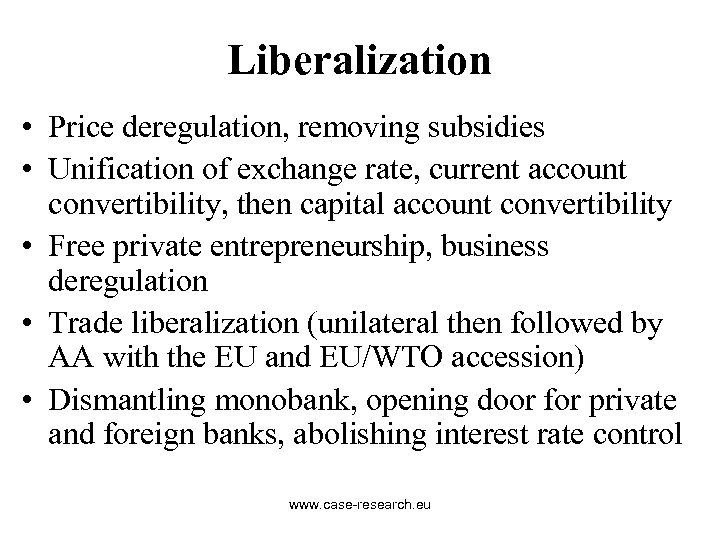radical shifting of performance towards improvement is called as: 14 3 Organizational Change Organizational Behavior
Содержание

Business processes happen at all ranges of an organization’s actions and include occasions that the shopper sees and occasions that are invisible to the customer. The term also refers to the amalgam of all of the separate steps toward the final enterprise objective. You might need heard of enterprise course of redesign beneath several different names, such as business course of reengineering, business course of change management, or business course of transformation. The time period business course of redesign can also be referred to as business course of reengineering or enterprise course of transformation. It is a rather drastic method to rediscover extra efficient methods to run a business process rather than taking small incremental steps. It often begins with course of mapping and its core purpose is to align IT sources with organizational business goals.
They define it simply as the “practice of mobilizing https://1investing.in/ to tackle tough challenges and thrive”. Adaptive Leadership, in this author’s opinion, is one of the most democratic and accessible leadership models available and very relevant in this day and age when people need their leaders to be more than just autocratic figureheads. A paradigm shift can result after the accumulation of anomalies or evidence that challenges the status quo, or due to some revolutionary innovation or discovery. Adam Hayes, Ph.D., CFA, is a financial writer with 15+ years Wall Street experience as a derivatives trader. Besides his extensive derivative trading expertise, Adam is an expert in economics and behavioral finance. Adam received his master’s in economics from The New School for Social Research and his Ph.D. from the University of Wisconsin-Madison in sociology.
In fact, people’s opinions toward change are affected by opinion leaders, or those people who have a strong influence over the behaviors and attitudes of others (Burkhardt, 1994; Kotter, 1995). Instead of trying to get everyone on board at the same time, it may be more useful to convince and prepare the opinion leaders. Once these individuals agree that change is needed and will be useful, they will become helpful allies in ensuring that the rest of the organization is ready for change (Armenakis, Harris, & Mossholder, 1993). For example, Paul Pressler, after becoming the CEO of Gap Inc. in 2002, initiated a culture change effort in the hope of creating a sense of identity among the company’s many brands such as Banana Republic, Old Navy, and Gap. For this purpose, management segmented the employees into groups instead of trying to reach out to all employees at the same time. Gap Inc. started by training the 2,000 senior managers in Leadership Summits, who in turn were instrumental in ensuring the cooperation of the remaining 150,000 employees of the company .
- Business process change is often a major element of developing and/or implementing a new strategy.
- Many companies realize that outsourcing forces them to operate in an institutional environment that is radically different from what they are used to at home.
- Your highest achievers might feel held back a little, or maybe they’ll be energized by the influence they have on the team.
- The past few months have flipped our lives upside down.
Research shows that when people negatively react to organizational change, they experience negative emotions, use sick time more often, and are more likely to voluntarily leave the company (Fugate, Kinicki, & Prussia, 2008). Changes in the market conditions may also create changes as companies struggle to adjust. For example, as of this writing, the airline industry in the United States is undergoing serious changes. Demand for air travel was affected after the September 11 terrorist attacks. Also, the widespread use of the Internet to book plane travels made it possible to compare airline prices much more efficiently and easily, encouraging airlines to compete primarily based on cost.
Move quickly when action is needed, and keep things simple, factual, and direct. But what if you want to tell someone that he did all sorts of wonderful things during the past year? But ideally that should have happened when he actually did them (remember, real-time discussions are the aim). Talking about great stuff he did in the past makes for an enjoyable little ego massage, but it doesn’t propel you forward. Paradigms are incommensurable with one another, meaning that they essentially “speak a different language” or hold contradictory belief systems.
Why Do Organizations Change?
BPM is a systematic method to make a corporation’s processes extra efficient and dynamic to be able to meet the altering wants of enterprise. Continuous improvement is among the core underlying philosophies of BPM and it goals to place it at the centre of all BPM initiatives. BPM is an ongoing approach to continuously make execution of business processes higher.

A) Such new product developments decrease the chances of success. B) Customers do not consider the cost of design when making suggestions. C) Customers are at times unaware of what they really want.
How to Manage Paradigm Shifts
A laundry tracks clean linen output in pounds and their inputs of gas, water, electricity, and labor. A productivity measure incorporating all of these inputs is a multifactor measure. In a process map, a circle represents a step or activity in the process. Mapping creates a common understanding of process activities, their results, and who performs the steps. Outsourcing IS work overseas creates problems such as integrating domestic and nondomestic workforces and defining global work expectations.

Turnaround is a management technique or strategy which is applied to loss-making or sick industrial units. Turnaround, just like re-structuring, is a kind of technique used to prevent or stop a company from incurring losses or going into closure forever. Turnaround is an important aspect of the strategic management process. It simply means the radical shifting of the deteriorating performance of a business enterprise towards improvement, i.e., from loss-making to profit-making. It is an attempt to remove various weaknesses and make the business strong, stable and profit-making. Transformational change is about proactively creating the future organization and system.
Global urban homogenization and the loss of emotions
It is essential that you grow, hire, and reward managers who encourage open discussion and feedback. Effective managers don’t punish people when they express ideas or concerns, and they will listen to all ideas and implement the best. They’ll seek out their people frequently to understand how things are going, what’s working, and what’s not.

One of your jobs as a leader is to build the framework and radical shifting of performance towards improvement is called as that allows your people to operate at their peak potential. Put programs in place that empower employees to be successful at their jobs. Share your strategy freely — the “what” you’re trying to do — so that employees can figure out their own “how” to get there. When employees understand the trust you’re placing in them by allowing them to engineer their own work life and daily functions, they will be more committed and more engaged, and they’ll contribute far more. Research into the practices of the best team leaders reveals that they conduct regular check-ins with each team member about near-term work. These brief conversations allow leaders to set expectations for the upcoming week, review priorities, comment on recent work, and provide course correction, coaching, or important new information.
Quality improvement MCQ
Business course of reengineering is a enterprise administration strategy, initially pioneered within the early Nineties, focusing on the analysis and design of workflows and enterprise processes inside an organization. BPR aimed to help organizations essentially rethink how they do their work so as to dramatically enhance customer support, minimize operational costs, and turn into world-class competitors. Business process reengineering is a technique used to transform business processes for more practical achievement of enterprise targets and functions. If used correctly, BPR will create an environment friendly, efficient and responsive business for its homeowners, staff and prospects.
A career program of this nature isn’t just a pretty idea. It’s also built on the science of what drives true employee engagement. Take, for example, the data in Mercer’s 2013 What’s Working study that found that “the work itself, including opportunities for development” , was primary in driving engagement. It’s the nature of satisfying work, and the opportunity to have a say in what that work is, that are the key drivers of engagement. In a publicsurveyDeloitte conducted recently, more than half the executives questioned (58%) believe that their current performance management approach drives neither employee engagement nor high performance. They, and we, are in need of something nimbler, real-time, and more individualized—something squarely focused on fueling performance in the future rather than assessing it in the past.
Organizations may realize that as the workforce gets older the types of benefits they prefer may change. Work arrangements such as flexible work hours and job sharing may become more popular as employees remain in the workforce even after retirement. As the workforce rapidly ages, it also becomes possible that employees who are unhappy with their current work situation will choose to retire, resulting in a sudden loss of valuable knowledge and expertise on the part of organizations. Therefore, organizations will have to devise strategies to retain these employees and plan for their retirement.
By responding early to business problems, Finance can demonstrate and prove that it is a part of the solution. However, if Finance reacts too late or provides inaccurate, unreliable and out of date information, it may be seen as a part of the problem and may end up being restructured, with the CFO replaced. Visible signs of optimum utilization of available resources signalling that the business unit is becoming a visible one. The downward trend in production, profit and sales. If you are trying to dramatically change the way things are done, you will find that resistance is greater.
Ideas capable of creating paradigm shifts aren’t always well received at first. Those found in the scientific world often result from scientists working initially on the fringe. Their controversial research is perceived as misguided or a dead end. While skepticism and inquiry are integral parts of the scientific process, sometimes a scientist does have a revelation, which leads to a paradigm shift. The weight of scientific and public resistance to the new paradigm can sometimes provoke ridicule. Reacting quickly and appropriately to impending paradigm shifts has a lot to do with the long-term success of a business.
Executing Change
The term business process redesign refers to a complete overhaul of a company’s key business process with the objective of achieving a quantum jump in performance measures such as return on investment , cost reduction, and quality of service. Total Quality Management and BPR share a cross-functional relationship. Quality specialists tend to focus on incremental change and gradual improvement of processes, whereas proponents of reengineering often search radical redesign and drastic improvement of processes. Quality administration, often referred to as TQM or steady enchancment, means applications and initiatives, which emphasize incremental enchancment in work processes, and outputs over an open-ended period of time.
FTSE 100 closes Friday in the red – Proactive Investors UK
FTSE 100 closes Friday in the red.
Posted: Fri, 24 Feb 2023 16:40:00 GMT [source]
Managers need to make it clear that they are there to provide advice and support, and that they will make themselves available on the employee’s timeline. As we’ve discussed, it’s highly unlikely that any employee will walk into a yearly performance review in the proper frame of mind to hear and process feedback. If the change effort has been successful, change will have become a part of corporate culture.
We’ll learn about incremental change, radical change, as well as characteristics and examples of each. The Consumer Division is presently producing 14,400 units out of a total capacity of 17,280 units. Materials used in producing the Commercial Division’s product are currently purchased from outside suppliers at a price of$150 per unit. The Consumer Division is able to produce the materials used by the Commercial Division. Except for the possible transfer of materials between divisions, no changes are expected in sales and expenses. FADE model performance improvement model developed by Organizational Dynamics Inc.
